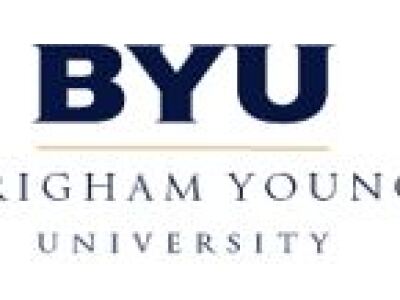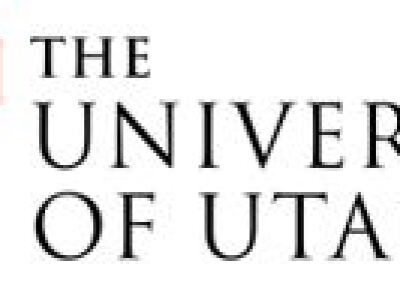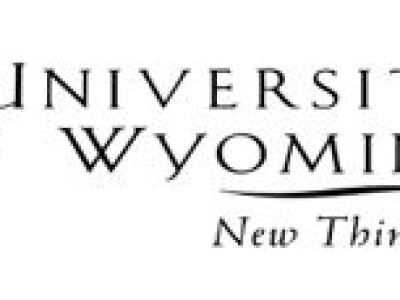CI-Water Project

Developing a better understanding of the inter-connectivity of natural and human water resources systems in Utah and Wyoming is a pursued and accomplished goal for an interdisciplinary research team from both Western States. In 2011, this interdisciplinary team received a $6 million, three-year award from the National Science Foundation (NSF).
The award allowed the team of researchers to develop high-performance computer modeling and computational resources (known as cyberinfrastructure or CI for short) to simulate and study how factors such as population growth, shifting land uses and climate variability will impact water storage and availability in the Intermountain West. This award was made under the NSF Experimental Program to Stimulate Competitive Research (EPSCoR), which supports states’ efforts to enhance research, science and mathematics education, and workforce development.
The CI-WATER project included researchers from Brigham Young University, the University of Utah, Utah State University, and the University of Wyoming. BYU and the University of Wyoming were the lead institutions for their respective states in the consortium.
learn more about CI-WATER here.
Team Members

BYU

USU

UofU

UofW
Project Components
- Enhance Cyberinfraestructure Facilities
- Enhance Access to Data and Computationally-Intensive Modeling
- Enable High-Resolution Multi-Physics Modeling
- Enhance STEM Learning and Water Science Engagement
Project Results
Enhance Infrastructure Facilities
Complete CI acquisitions fully operational. University of Utah added ~1 PB of active RAID disk storage, extended the warranty at minimal cost on original storage through May 2020, and gained approval for the necessary infrastructure for reliable backup and archive of the disk storage, including a dedicated backup server, additional Arkeia backup software, sufficient LTO6 tape media, cleaning tapes, and network cables and optics for connection to the 40 GB network. These resources exhausted the remaining hardware budget at University of Utah, requiring supplemental funding of ~$21,000 from central resources. USU added three virtual hosts and approximately 20 TB of additional shared storage to the virtualization infrastructure hosted in USU’s enterprise data center in collaboration with the iUTAH project. Research/development and production platforms were separated into two virtual clusters to better support production CI-WATER Data Services and iUTAH.
Enhance access to data- and computationally-intensive modeling
The development of Tethys Platform and TethysCluster was completed succesfully, which aid in the development of cloud-based water resources modeling applications. The tools were fully documented with help pages, tutorials and videos; and we developed several prototype applications. The tools and applications were highlighted at the National Flood Interoperability Experiment (NFIE) in the summer of 2015 at the National Water Center in Tuscaloosa, Alabama and CI-WATER researchers played a central role in assisting in NFIE management and trainees in using the tools, and we formed an organization to support open source development of Tethys Platform.
We completed the planned development of web-based data services to support the application of hydrologic models on High Performance Computing (HPC) systems. These services provide hydrologic researchers and modelers access to HPC resources without requiring them to become experts who understand the intrinsic complexities of the data services. The result is reduced time and effort needed to find and organize the data required for executing hydrologic models and data preprocessing tools on HPC systems. The web services developed are split into data services and HPC services. We have also finalized the design specifications for a relational data model to organize, store, and synthesize water management data and demonstrated its ability to provide a synthetic view of water management information in the lower Bear River, Utah.
Advance high-resolution multi-physics watershed modeling
This project year we completed development of the version 1.0 of ADHydro, a large-scale, high-resolution, multi-physics watershed simulation model. This first version runs effectively on watersheds up to about 20,000 sq. km. on 500 computational cores. This version includes 2-D overland and groundwater flow routing, 1-D channel routing including wetlands and reservoirs, and 1-D vadose zone flow calculation using the GARTO version (Lai et al. 2015) of the improved Talbot-Ogden infiltration model (Ogden et al. 2015a,b). Version 1.0 includes basic water management in terms of reservoirs and trans-basin diversions. The details of the ADHydro model were presented at the third Federal Interagency Hydrological Modeling Conference, April 19-23, Reno, Nevada. The details of the model formulation were published in the proceedings of this conference (Ogden et al. 2015c).
Version 1.0 of ADHydro uses the Charm++ runtime environment for parallelization, load balancing, and checkpointing. Charm++ is an object-oriented parallelization scheme wherein objects that have state variables and relations to other objects via processes, are used to simplify how a code is run on a supercomputer. In version 1.0 of ADHydro, each triangular mesh element is defined as a Charm++ object. Our decision to employ this fine discretization enables rapid code prototyping, but causes inefficiencies due to the fact that this scheme maximizes communication on the massively parallel computer interconnect. At the time of writing this report we have re-cast the ADHydro code to use regional Charm++ objects, which we expect to produce a speedup on the order of 30 to 100 times. This new re-cast version we will call version 2.0.
We developed two different scenarios related to climate change and water diversions, which were presented at the first ADHydro symposium in July. We are running our prototype version 2.0 on the NCAR-Wyoming supercomputer. The modeling framework is in place for ensemble Kalman filter forecasts.
Promote STEM learning and water science engagement.
We have completed all education and outreach activities described in the proposal. During this reporting period, several activities promoted STEM learning and water science engagement with graduate students and professionals, K-12 students and teachers, and other audiences. Graduate students at all four CI-WATER institutions plus the University of Virginia participated in the team-taught Hydroinformatics graduate course to develop the pipeline of professionals ready to contribute to STEM fields. Several opportunities were provided for researchers to learn about CI-WATER’s technical resources: project leadership actively participated in the Consortium of Universities for the Advancement of Hydrologic Science (CUAHSI), co-organizing the Hydroinformatics 3rd Annual Conference, which included workshops that increased engagement with CI-WATER’s contributions to water science and modeling. Additional trainings and tutorials helped participants better understand Tethys, WaM-DaM, ADHYdro and other products. Project events were actively cross-promoted with CUAHSI and iUTAH, and a flyer was developed to improve cross-team communication, help student participants understand how their work fit into the project as a whole, and promote the project’s 23 models, development tools, and web apps. Announcements about products and workshops have been disseminated via email to industry representatives including participants in the first CI-WATER symposium, water resource agencies staff, and participants in other EPSCoR jurisdictions’ projects.
K-12 teachers and learners also engaged with STEM learning and water science through CI-WATER educational resources. Materials developed from the 2013 CI-WATER Summer Teacher Institute to increase understanding of water modeling were completed and featured at trainings including a professional development workshop for STEM educators in Summer 2015. The CI-WATER Teaching Toolboxes were used by 21 educators to bring hands-on water science and modeling activities to 783 children this year. Once again, a week of water-themed programming was broadcast on UEN-TV to raise awareness of water issues and the importance of water science in our region. The website, which will continue to serve as a central access point for project information until August 30, 2017, received updates to improve the clarity of project messages and present new educational materials.
Project Benefits
Provides key infrastructure for research into emerging technology needed to advance hydrologic science/engineering
Large-scale applications
Physics-based modeling
Complex integrated simulations
a linkage to and support for managers and hydrologic applications
Critical high speed hardware
Immediate open access to large volumes of data and the necessary interface & software to accomplish the work
Citations
UTAH
Abdallah, Adel, Rosenberg, David E. WaM-DaM: A Relational Model to Organize and Synthesize Disparate Systems Water Management Data. Environmental Modeling & Software.
Dolder, H., N. Jones, and E.J. Nelson, “A simple methodology for using pre-computed hydrologic models in flood forecasting with uniform rainfall and soil moisture pattern.” Journal of Hydrologic Engineering. May 18, 2015. DOI:10.1061/(ASCE)HE.1943-5584.0001232
Goharian, E., Burian, S., Bardsley, T., and Strong, C. (2014). “Developing a new method to evaluate vulnerability of reservoirs under climate change Impact in water supply systems.” Journal of Water Resources Planning and Management, under review.
Jones, Norm; Nelson, Jim; Swain, Nathan; Christensen, Scott; Tarboton, David; Dash, Pabitra. Tethys: A Software Framework for Web-Based Modeling and Decision Support Applications. International Environmental Modelling and Software Society (iEMSs). 2014, San Diego, California.
Perez, J., Swain, N. R., Dolder, H., Christensen, S. D., Snow, A., Nelson, & E., Jones, N. “From Global to Local: Providing Actionable Flood Forecast Information in a Cloud-Based Computing Environment.” Journal of American Water Resources Association. (Submitted).
Smith K, Strong C, Wang S. 2015. Connectivity between historical Great Basin precipitation and Pacific Ocean variability: A CMIP5 model evaluation. Journal of Climate doi: http://dx.doi.org/10.1175/JCLI-D-14-00488.1 (In Press)
Snow, A. D., Christensen, S. D., Swain, N. R., Nelson, E. J., Ames, D. P., Jones, N. L., Ding, D., Noman, N., David, C. H., & Pappenberger, F. “A New High-Resolution National-Scale Hydrologic Forecast Model and Dataset.” Journal of American Water Resources Association. (Submitted).
Strong, C., Kochanski, A., and Crosman, E. (2014). “A slab model of the Great Salt Lake for regional climate simulation.” Journal of Advances in Modeling Earth Systems. DOI: 10.1002/2014MS000305
Swain, N. R., Latu, K., Christensen, S. D., Jones, N. L., Nelson, E. J., Ames, D. P., & Williams, G. P. (2015). “A review of open source software solutions for developing water resources web applications.” Environmental Modelling & Software, 67, 108-117. DOI:10.1016/j.envsoft.2015.01.014
Swain, N. R., Christensen, S. D., Snow, A., Dolder, H. Goharian, E., Anderson, J., Jones, N. L., Nelson, E. J., Ames, D. P., & Burian, S. J. “The Design and Implementation of an Open Source Platform for Water Resources Web App Development.” Environmental Modelling & Software. (Submitted).
Zahmatkesh, Z., Karamouz, M., Tavakol-Davani, H., Goharian, E., and Burian, S.J. “Modifications of urban stormwater runoff caused by precipitation changes based on CMIP5 climate projections.” Journal of Hydrologic Engineering, under review.
WYOMING
Ao, S. I., O. Castillo. C. C. Douglas, D. D. Feng, and J.-A Lee (eds.), International MultiConference of Engineers and Computer Scientists 2015, Hong Kong, 18-20 March, 2015, Proceedings (2 volumes), International Association of Engineers (IAENG), Hong Kong, 2015.
Fabiano, E., M. Seo, X. Wu, and C. C. Douglas, OpenDBDDAS Toolkit: Secure MapReduce and Hadoop-like Systems, Procedia Computer Science, 51 (2015), pp. 1675-1684.
Lai, W., F.L. Ogden, R.C. Steinke, and C.A. Talbot, 2015. An efficient and guaranteed stable numerical method for continuous modeling of infiltration and redistribution with a shallow dynamic water table, Water Resour. Res., DOI:10.1002/2014WR016487.
Lai, W., and F.L. Ogden, 2015. A Mass-Conservative Finite Volume Predictor-Corrector Solution of the 1D Richards’ Equation, J. Hydrol., DOI: 10.1016/j.jhydrol.2015.01.053.
Ogden, F.L., W. Lai, R.C. Steinke, J. Zhu, C.A. Talbot and J.L. Wilson, 2015. A new general 1-D vadose zone solution method. Water Resour. Res. 52, doi:10.1002/2015WR017126.
Ogden, F.L., W. Lai, R.C. Steinke, and J. Zhu, 2015, Validation of finite water-content vadose zone dynamics method using column experiment with a moving water table and applied surface flux. Water Resour. Res., 51, doi:10.1002/2014WR016454.
Seo, M., C. C. Douglas, F. L. Ogden, M. Allen, and J. Zhu, 2015. A Reliable and Computationally Efficient Alternative to the One Dimensional Richards Equation for Variably Saturated Flow in Soils, SIAM Journal on Numerical Analysis, (in review).
Xie, J., R. Cools, C. C. Douglas, and W. Zhang (eds.), Data Intensive Scientific Discovery, Shanghai University Press, 2014.
Ogden, F.L., W. Lai, R.C. Steinke, J. Zhu, C.A. Talbot and J.L. Wilson, 2015. A new general 1-D vadose zone solution method. Water Resour. Res. 52, doi:10.1002/2015WR017126.